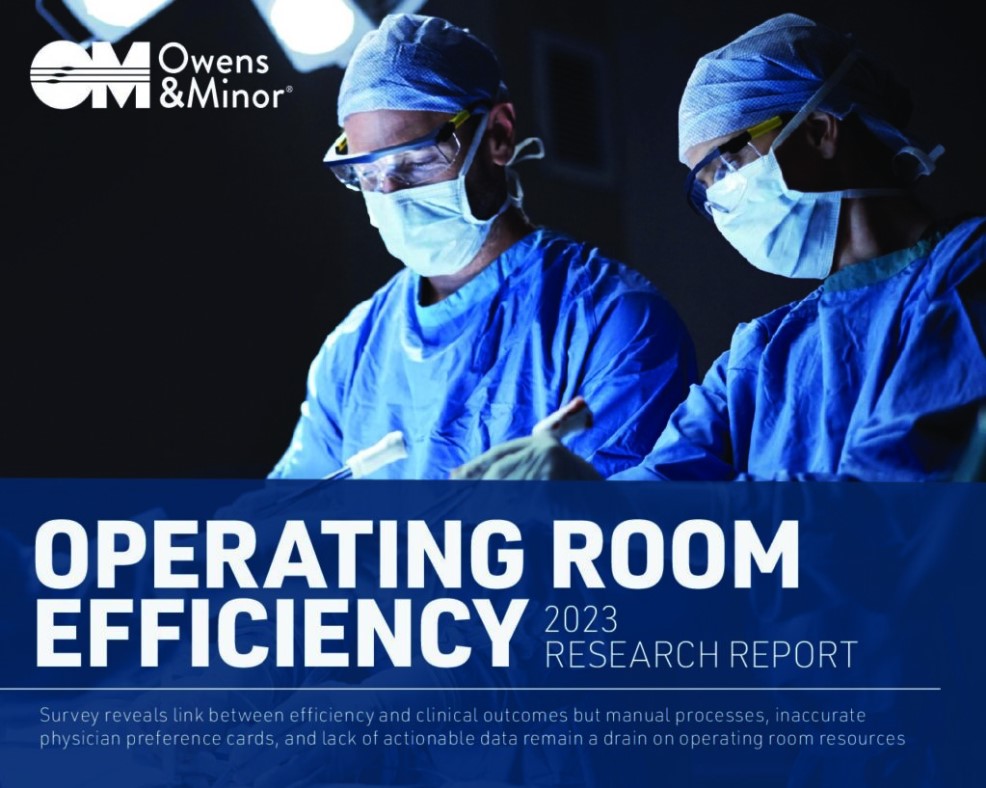Owens & Minor recently surveyed 250 Perioperative leaders to gain their perspectives on efficiency in the operating room (OR). Among those surveyed, 94% rate supply chain optimization as “very important” or “extremely important,” proving the important role products and supplies play in costs, quality, and outcomes.
But operating room (OR) clinicians still struggle with supply challenges. At the top of the list: Supplies not stocked and readily available for a procedure (30%), documenting products used during a procedure (20%), and products expiring before being used (12%).
These findings and others, show while there is a desire to improve OR supply management, there are challenges to achieving this goal.
Digital OR processes streamline workflows, but manual work persists
Among Perioperative leaders who said their supply chain activities are 100% digital, the average OR utilization rate is 71%. But this high rate of technology solution usage is the exception not the rule, according to the survey results.
The findings reveal that 40% of tasks are still handled by OR clinicians manually, most notably PAR level management and inventory tracking. Furthermore, only 21% of OR teams use barcode scanning to document supplies. The question becomes: Do OR teams lack technology solutions for supply chain optimization or do the solutions they have in place fail to support their workflows?

Of tasks are still handled by OR clinicians manually according to a recent study.
Tech solutions in place, but disjointed
A significant finding that sheds light on OR supply chain management challenges is lack of technology solution integration. Nearly half (49%) of Perioperative leaders say their solutions across electronic health records/electronic medical records EHR/EMR), inventory tracking, materials management, billing, and patient identification are “not integrated” or only “somewhat integrated.”
These disjointed systems likely contribute to the high levels of supply management complexity and manual intervention reported by survey respondents. If data does not flow seamlessly from one system to the next, clinicians find themselves having to key information into each one separately.
The more integrated an OR’s technology platforms, the more often they are used by clinical teams
This is not only time-consuming but increases the risk for human error. If supply usage information documented in the patient’s record differs from what is contained within the materials management information system (MMIS), this can skew inventory levels. Inaccurate or incomplete supply usage documentation can also impact patient safety if the product used in a procedure is linked to an adverse event or recall.
OR teams with tech integration work more efficiently
The survey results show a correlation between technology system integration and OR utilization, indicating OR teams who perform fewer manual tasks operate more efficiently compared with those who must manually intervene.
Perioperative leaders who reported a high level of system integration, have a higher OR utilization rate (71%) compared with those that have no integration (57%).
Additionally, the more integrated an OR’s technology platforms, the more often they are used by clinical teams. Those leaders with a 60% or higher level of technology-enabled processes, rated their level of integration as “integrated” or “very integrated.” On the other hand, facilities where fewer than 60% of their processes are technology-enabled reported only 30% of their solutions as “integrated” or “very integrated.”
The survey findings indicate that when technology is difficult to use and clinicians must workaround lack of system connectivity, they may revert to performing the task at hand manually. But when systems are seamlessly integrated, easing the documentation workload, clinicians are more likely to use it.
Employ a single, integrated supply chain solution
The research reveals the need for a Perioperative supply chain management solution that seamlessly integrates with other systems (e.g., EHR/EMR, MMIS) and fits within a clinician’s existing workflows for automated supply tracking and management.
Owens & Minor’s QSight is an end-to-end perpetual inventory management solution with automated point of use (POU) product data capture via barcode scanning. It integrates with a hospital’s IT infrastructure to capture the total picture of inventory while improving utilization and patient charge capture.
QSight also matches up product recalls to a hospital’s current supply inventory, alerting users to items that must be removed. It can even be configured to alert a clinician if they try to use a recalled or expired product.
Looking For More Of The Latest Trends In Operating Room Efficiency
The 2023 Owens & Minor Operating Room Efficiency Research Report presents key findings from the survey of 250 perioperative leaders. This report offers quantitative insights into how efficiency in an operating room correlates to patient outcomes and drills down into specific factors that generate unnecessary labor costs and waste.

















